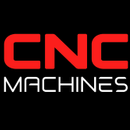Fuel Nozzles: Enhancing Combustion Efficiency and Engine Performance

Fuel Nozzles: Enhancing Combustion Efficiency and Engine Performance
Fuel nozzles are essential components in both aviation and ground-based engines, governing how fuel is delivered and atomized for efficient combustion. Whether in a commercial jet turbine or a stationary power generator, the design and condition of these nozzles greatly influence engine performance, fuel economy, and emissions. Below, we delve into what fuel nozzles are, why they matter, the types commonly in use, and how modern manufacturing practices ensure consistent quality.
Understanding the Role of Fuel Nozzles
Fuel nozzles regulate and disperse fuel into the combustion chamber in a fine mist or spray. This atomization process ensures the fuel mixes thoroughly with air before ignition—an essential step for complete and efficient combustion. Inadequate atomization or poor spray patterns can lead to hot spots, excessive smoke, increased emissions, and even potential engine damage. Meanwhile, well-designed fuel nozzles promote optimal fuel-air mixing, resulting in stable flame control, better fuel economy, and lower pollutant output.
Types of Fuel Nozzles
1. Pressure Atomizing Nozzles
Pressure atomizing nozzles rely on high fuel pressure to break up the fuel stream into tiny droplets. Common in diesel and some aviation applications, these nozzles can be single or multi-orifice, shaping the spray pattern to match specific combustion chamber geometries.
2. Airblast Nozzles
In airblast systems (often found in gas turbines), high-velocity air is introduced to the fuel flow, shearing the fluid into a mist. This design excels at delivering even droplet sizes, reducing soot formation and enabling more stable combustion under variable load conditions.
3. Duplex and Simplex Nozzles
Duplex nozzles feature two distinct fuel passages—one for low-flow conditions (e.g., idle or lower power settings) and one for high-flow demands. Simplex nozzles, on the other hand, have a single fuel passage. Duplex nozzles add complexity but provide broader operating ranges and improved efficiency for gas turbine engines.
4. Swirl-Type Nozzles
Swirl-type designs impart a rotating motion (swirl) to the fuel or the air, enhancing atomization by forcing the liquid into a thin sheet that breaks into droplets. Their straightforward construction can simplify maintenance, but swirl angles must be carefully engineered to avoid undue turbulence or incomplete combustion.
5. Spill-Return Nozzles
Spill-return nozzles incorporate a return line that diverts excess fuel back to the tank or a regulator. This approach helps maintain consistent spray pressure and flow—particularly beneficial for engines that operate across wide power ranges.
Materials and Manufacturing
Fuel nozzles generally consist of heat-resistant metals, engineered to withstand extreme temperatures and pressures. Alloys like stainless steel, nickel-based superalloys (e.g., Inconel), or titanium appear frequently, especially in high-temperature turbine environments.
CNC Machining and Precision
Modern Computer Numerical Control (CNC) manufacturing ensures precise geometries for orifices, swirl chambers, and flow passages. By holding tolerances to the micrometer level, CNC mills and lathes enable repeatable spray patterns across large production runs. This exactness is essential in applications (e.g., gas turbines or high-performance diesel engines) where consistent fuel delivery can directly impact thrust, efficiency, and emissions.
Advanced Coatings
Some nozzles use specialized coatings—such as thermal barrier coatings or anti-coking finishes—to extend service life and mitigate carbon buildup. These coatings preserve metal integrity under the extreme heat of combustion, especially in jet engines or high-output industrial turbines.
Common Applications
- Aviation Turbine Engines
Jet engines, turboprops, and helicopter turboshafts demand uniform spray distribution for stable combustion and minimal smoke. Multi-orifice or airblast nozzles frequently appear here, paired with robust alloys that endure repeated thermal cycles.
- Diesel Engines
In automotive, marine, and power generation contexts, diesel injectors (a type of fuel nozzle) are subject to heavy fouling. Durable, easily serviced nozzles can boost injection precision and reduce soot, complying with increasingly strict emissions standards.
- Industrial Burners
Power plants, refineries, and process industries often deploy large-scale burners with specialized nozzles for heavy or alternative fuels. Airblast or swirl-type nozzles are popular choices, facilitating reliable ignition and efficient heat output over extended operational cycles.
- Rocket Propulsion
Though structurally different from traditional engine nozzles, rocket injector plates perform a similar function: distributing and atomizing liquid propellants. Designs can range from simple showerheads to complex multi-element injectors, each carefully tailored to manage combustion stability at extremely high pressures.
Maintenance and Performance Optimization
Because fuel nozzles directly affect combustion, routine inspections are crucial. Clogged or eroded orifices can create uneven fuel distribution, leading to hotspots, combustion instabilities, and higher emissions. Regular cleaning, ultrasonic baths, or even in-place purging can mitigate soot buildup—particularly in diesel or heavy-fuel applications. In advanced turbine engines, borescope inspections help detect cracks or carbon deposits early, reducing the likelihood of mid-flight complications and expensive overhauls.
The Future of Fuel Nozzles
As emission regulations tighten and efficiency demands escalate, fuel nozzle technology continues to advance. Researchers are exploring:
- Additive Manufacturing: 3D printing of complex internal channels that improve heat transfer or swirl control.
- High-Temperature Ceramics: Potential for nozzles with enhanced thermal resilience in next-generation turbines.
- Real-Time Monitoring: Embedded sensors that track temperature and pressure, enabling in-flight or in-process adjustments.
Whether in cutting-edge jet engines or industrial burners, the quest for cleaner, more efficient combustion keeps fuel nozzle research at the forefront of energy technology.
Conclusion
Fuel nozzles serve as the linchpin for efficient combustion, ensuring that the precise amount of fuel enters the chamber in a finely atomized mist. With various designs—from airblast and swirl configurations to duplex or spill-return systems—these components must balance exact geometry, robust materials, and advanced coatings to withstand harsh operating conditions. Supported by precision CNC machining and ongoing innovations, modern fuel nozzles deliver reliable performance, improved fuel economy, and lower emissions across industries ranging from aviation to power generation.


